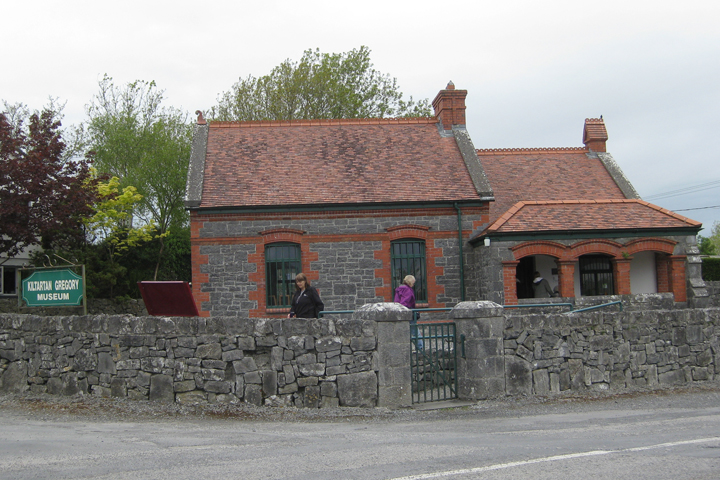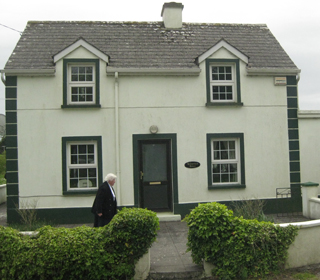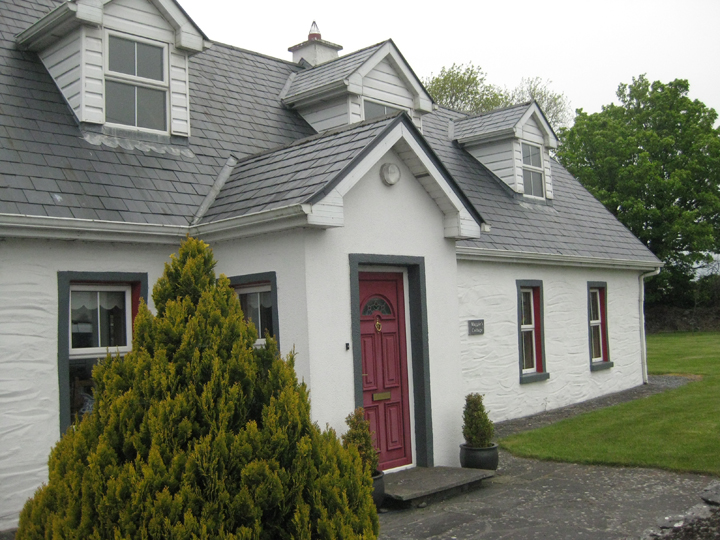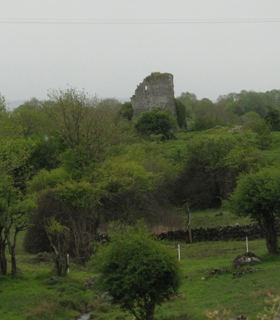Kiltartan - part 2
Our next stop was a delightful first meeting of our cousin, Benny Downey, Brendon’s son. He was waiting on the spot where his parents' home once stood (a bit further down the road from the John Cooney birthplace and up a long lane.) Before I could even get out of the car, Benny was saying "Welcome! Welcome!" And gesturing around him to show us where a house once stood that was home to the Downey family (today he lives in a modern home adjacent to this.)
Benny Downey We all introduced ourselves, and Benny expressed great admiration for Mother’s endurance and energy. We shared stories of previous meetings and near-meetings of our families. In 1992 when Steve, Martha and I were in Gort, we had asked after Brendon Downey in the pub at the Glynn Hotel. They told us he had passed away in 1982 but that his son, Benny, had "just been here." Unfortunately, we were leaving town that day and didn’t take time to find him. But this time we were able to connect with Benny, and the few minutes we had with him were wrapped in mutual affection. We pulled out the old letters and a list of family names to help clarify just how many generations had passed between us and our common ancestors, Patrick Connell and Ann Fahey (parents of Catherine and Mary.) I gave Benny a small carved wooden cross made by Moe Boll as a token to remember us.
Roberta, Sister DeLourdes and Benny Benny had such a sunny personality that we felt like we had known him forever, so when we were ready to part, I asked if I may give him a kiss. It was clear that he was agreeable to that, and then of course everyone else (except Sister) gave him a farewell kiss, too. After we were loaded in the car, Benny suggested that he give his brother Father Martin Downey a call to see if we might arrange a time to meet him. It made me laugh to listen to just Benny’s end of the conversation, as he explained to his brother just what he was proposing. I don’t know what Father Martin’s question was, but Benny’s reply was, “No, no. It’s five women you’ll be dealing with.” This must have been convincing, because with a little more exchange of information, we set a time of 7:00 p.m. for us to meet Father Martin at the Maldron Hotel "on the second roundabout on the Galway road." We had no idea, of course, where that was, but the GPS got us there with no trouble. This meeting, too, was a wonderful renewing of family ties. Father Martin is a busy man with a large parish of 10,000 parishioners at St. Joseph's church in Galway, but he made time to sit with us and chat for a couple of hours. We arrived early and were already sharing a Guinness around the table, but accompanied by more generous servings of water. Father Martin knows the family who runs the B&B where we are staying (he and Micheal McTigue are schoolmates), and he has traveled to many places across the world (serving in Malawi at one time, visiting Buenos Aires, San Francisco, Florida, and a whole list of other places that I can't recall.) He also expressed admiration for Mother and her great passion for family, travel and love of God. We confirmed all of those to be true assessments. We enjoyed particularly exchanging views of the world with Father Martin. Early in our conversation, he remarked about something being the "best thing that has happened to the Catholic Church," and Sara piped up saying that she thought perhaps Pope Francis was the best thing that has happened to the Church. Father clearly agreed with that! Our conversation then ranged around various questions of today's world, with frequent comparisons to what probably had faced our ancestors of long ago.
Clockwise, from left: Molly Daniel, Annis Householder, Martha Clark,
Father Martin Downey shows indenture Our lunch break earlier that day was also a wonderful thing. We went to Coole Park, a portion of the old Gregory estate (which was auction and parceled out after Lady Gregory's death in 1932.) The old house was razed, not because of any antipathy to the Gregorys but more because no one stepped forward with funds to sustain and keep it. It's a pity the house is gone because it was a mecca of the Irish cultural revival. Lady Gregory hosted many poets, playwrights, artists and others in the house -- including W. B. Yeats and his brother Jack as well as George Bernard Shaw. The grounds today are a lovely park, through which we roamed after having lunch in the cafe at the visitors' center (I had smoked salmon toast points!) The park is such a deep, green forest that it is practically another world into which one can escape. It has ancient and revered trees, including an old copper beech tree known as the "Autograph Tree," where Yeats, Shaw, Lady Gregory and others carved their names in the trunk.
The Walled Garden in Coole Park - the flowers are bear garlic or ransoms
Sister Delourdes, Martha, Sara, Molly and Roberta at the
Martha and Molly at the base Other stops included a visit to the Kiltartan Gregory Museum, housed in a schoolhouse built in 1892 at the behest of Sir William Gregory and designed by his brother-in-law Francis Persse (brother of Lady Augusta Gregory.) In addition to a recreated classroom, the museum contains exhibits dedicated to Lady Gregory and her literary circle, as well as photographs, manuscripts and first editions. We also found interesting bits of information about local history, including a detailed map of the parish of Kiltartan, information about the Great Hunger and traditional folklore.
Kiltartan Gregory Museum, once the Kiltartan National School
Kiltartan House Across the road from the Kiltartan Gregory Musuem is Kiltartan House, a cottage which was once home to Patrick Swift and Bridget Henniffe and now belongs to a member of Sister Delourdes's family. Not far from the Kiltartan crossroads, Sister showed us the house which was once home to Mary Swift McDonnell, a first cousin of my great-grandpa John C. Swift. (Mary was a daughter of John's uncle, James Swift.) When my great Aunt Agnes visited Gort in 1911, one of the Sisters of Mercy told her that she had a cousin living at Kiltartan. Agnes got a jaunting cart and went to Kiltartan to meet her. She later wrote home to her father: "The woman was glad to see me at least she had an awful frog in her throat when I left."
Former home of Mary Swift McDonnell, whom Agnes visited in 1911 at this place near Kiltartan We drove east from Kiltartan into a townland known as Castletown. Here we saw the ruins of an old castle, variously known as Banninamantain, Kiltartan or Castletown Castle. It was a 13th-century tower built by the Burke (de Burgo) family, a clan with Norman origins and a complicated history (see http://www.galway-ireland.ie/burke.htm.) Their family is said to have built 121 castles in County Galway (includes Castletown and Thoor Ballylee.)
Castletown Castle As she pointed out the ruins of Castletown, Sister noted that the structure had been demolished by the artillery forces of Oliver Cromwell, adding that the Irish have "no love for Cromwell." To which Mother piped up that it was Cromwell who said the Irish people who resisted British rule “Could go to Hell or to Connaught.” (If you think that 400 years is a long time to hold a grudge, then you might not know anyone with Irish heritage. And if you click here to read this article by John Walsh, you'll understand their special feelings about Cromwell.) “Good girl!” Sister exclaimed. Everyone enjoyed the day. It was memorable and packed with so many family touchpoints that my heart is full. This is what I have always wanted to know about this place and my roots here. I am so grateful to Sister DeLourdes, to Sister Joan, to Aunt Agnes, to Uncle Mike, and to Mother for preserving and promoting stories and clues which led to our making all of these wonderful connections to our past. More photos from the day's highlights can be found in the Gallery, and you view my Google map of the places we visited.
|
| Coming next: The Burren. Click here to continue reading. |
| Other stuff and 2023 trip |
|
back to the top |
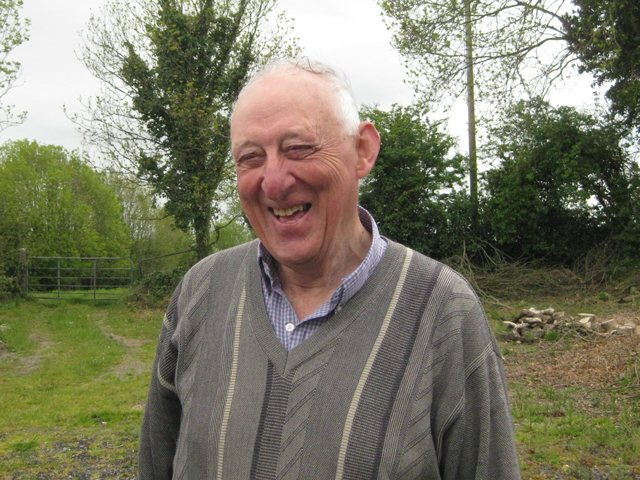

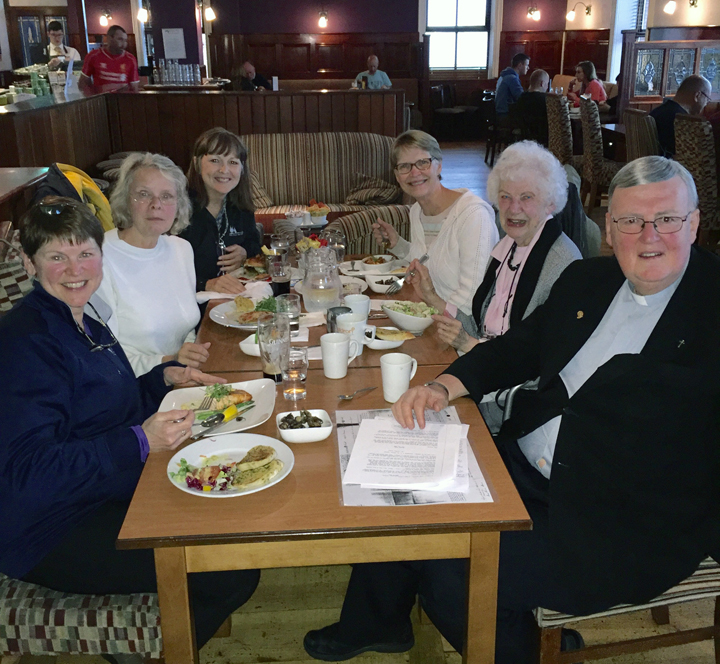
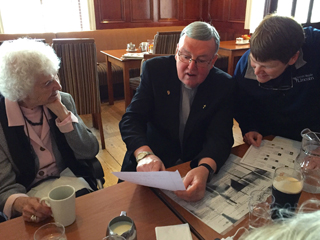
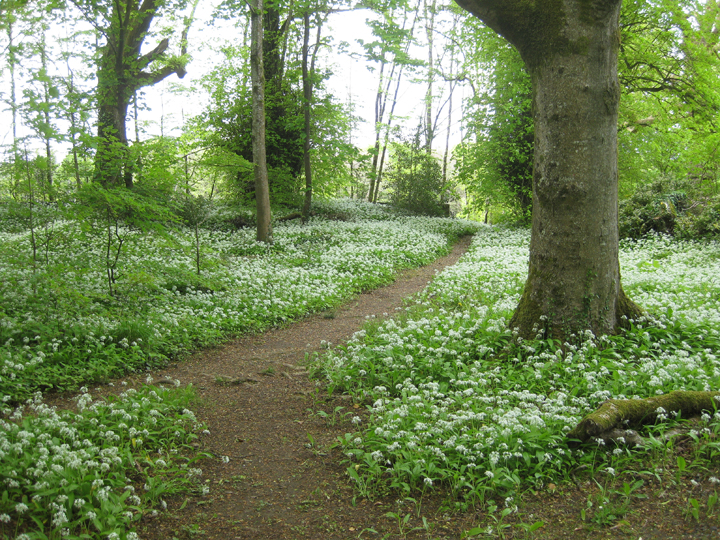
.jpg)
.jpg)
